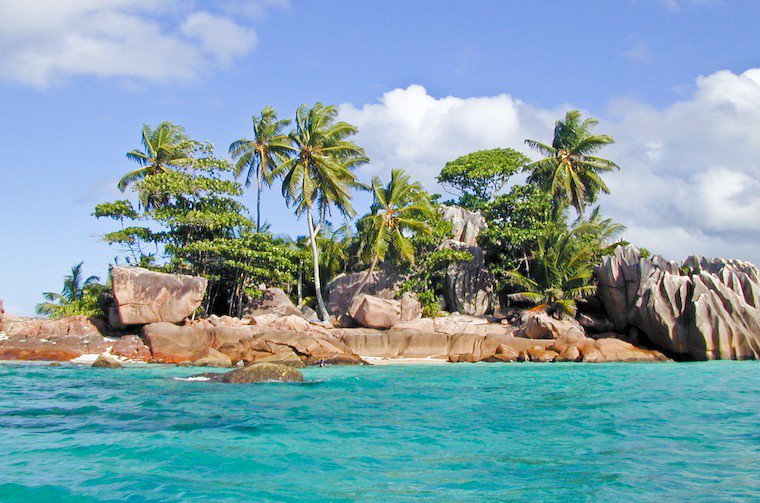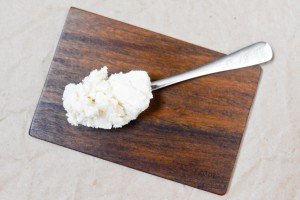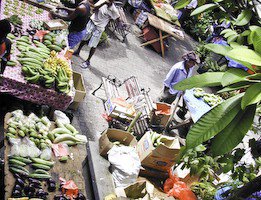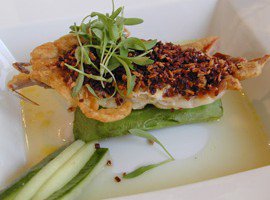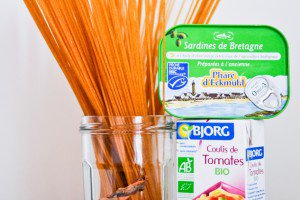Well, well, well. Even the best things come to an end, and here we are, back in Paris! This was a fantastic vacation: a perfect mix of discovering the islands, their breathtaking landscapes and incredible fauna and flora, snorkeling, resting on perfect beaches, and enjoying the delicious local food.
There is definitely something to be said about extremely fresh seafood, prepared with care, eaten in the company of the love of your life, while seated at a shaded terrace with a view on the deep blue sea, a light refreshing breeze brushing your face.
So, what’s Seychelles cuisine like, you ask?
We mostly followed the really good restaurant recommendations of our guidebook, and ate at small family-owned restaurants, with very friendly service. We also took advice from local people we chatted with. We were lucky enough to stay at hotels which, in addition to comfortable clean rooms with terraces overlooking the sea, offered excellent food. Two of the restaurants we tried were so great we went back twice : Oganibar, in the Baie St-Anne on Praslin, owned and operated by a man from the Seychelles and his wife from Switzerland; and Sundown, at Port Glaud on Mahé, where we would gladly have spent the whole afternoon, marveling at the perfect view on the Islette lagoon.
Restaurants do serve meat-based dishes (lamb, chicken, pork), but the meat is not locally bred (apart from some of the chicken: we did have close encounters with flocks of clucking animals on our bike rides through the island of La Digue). But the best of their dishes revolve around fish and shellfish, and as we are big fans of the gifts of the sea, that’s what we went for most of the time.
Seafood can be served grilled — with or without a butter-based sauce — or it can be served in spicy cari preparations (green or red curry). The curry sauce often involves lait de coco (coconut milk) and the ubiquitous citronnelle (lemongrass). We had crab and octopus — of a tenderness I’d never experienced before — and a host of different types of fish: the moistest rabbit fish (cordonnier), parrot fish (poisson perroquet), mullet (rouget), ballan wrasse (vieille)… We liked to think we might have met some of them while scuba diving!
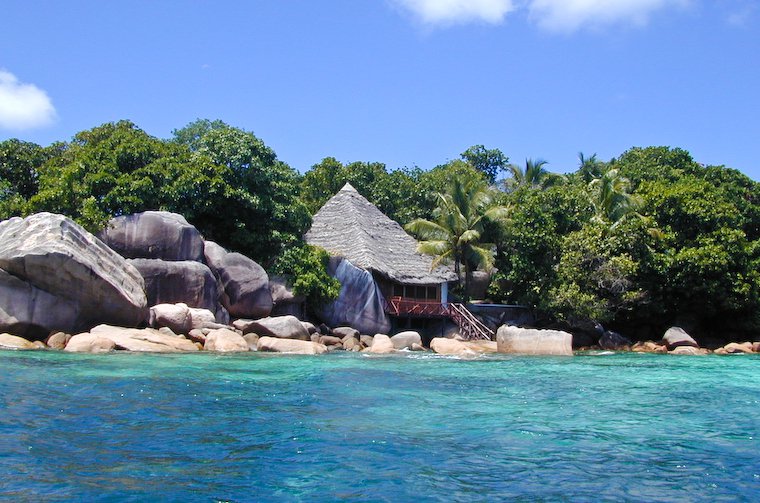
Besides fish, we also tasted a great local specialty: bat meat! They have big bats called roussettes that you can spot, flying from tree to tree, when night falls. Some restaurants have it permanently on the menu, but others require you to order it in advance, as they have to get someone to hunt them for you. We had it twice: once prepared en civet (stewed with vegetables) at Oganibar, and once as a cari at Sundown. We enjoyed it very much. The meat is full of little bones, a bit like frogs’ legs, so you need to fight a little, but we like that. It is tightly knit like duck meat, and has a gamy yet subtle flavor that reminded us of lamb. We also loved the adventurous thrill of eating Batman’s little helpers.
{Edit: One of the two bat species that live in the Seychelles is critically endangered, not because people eat them, but because they’re insectivorous and pesticides that find their way into the insects they eat. The bats served at restaurants are the fruit-eating kind, and their population is stable.}
Dishes are served with long-grain white rice, plain or spiced or saffron-flavored, and soft white bread in square slices, baguette slices, or little loaves — they don’t seem to have any other kind. We were also occasionally served bread slices spread with garlic butter. Garlic bread, Seychelles-style!
Another accompaniment was what they call chatini, a condiment served cold, made with thinly sliced marinated vegetables or fruit, cooked or raw: eggplant, cucumber, cabbage, papaya, mango or giraumon, a local type of pumpkin. The name brings chutney to mind, but chatini is not as sweet as Indian chutney, and is more vinegary too.
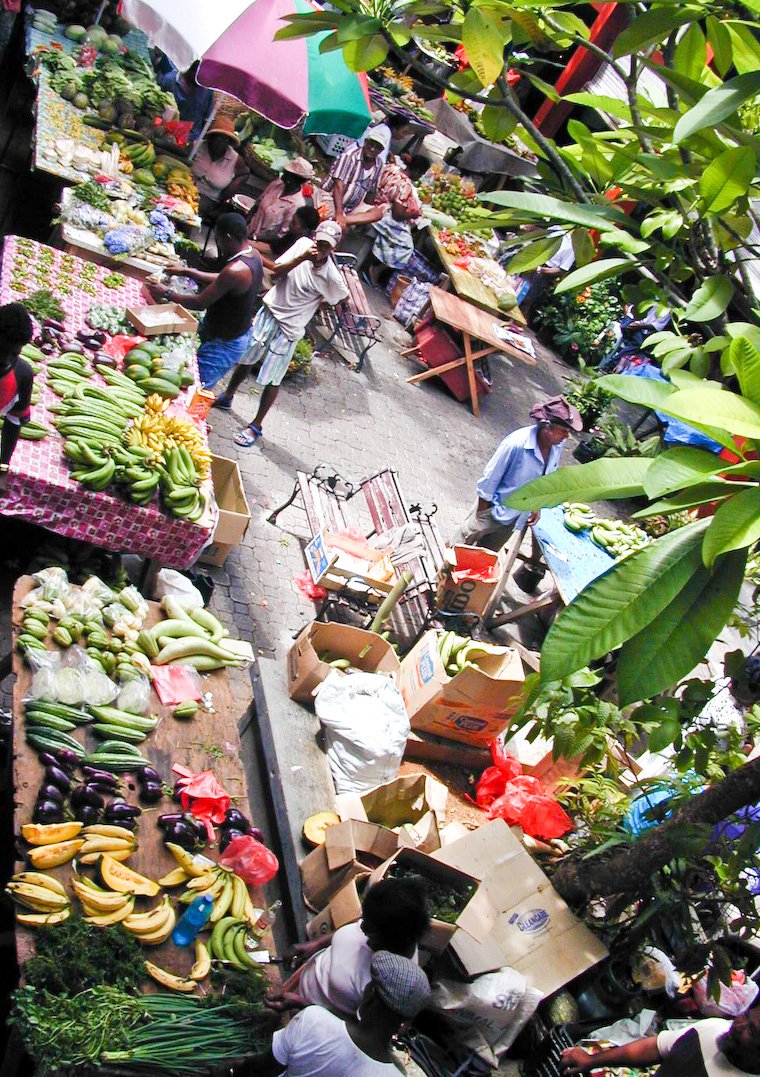
Lemongrass is used in food, but also to make infusions, and after dinner you are offered tea, coffee or citronnelle. I am ordinarily not a big fan, as it reminds me of mosquito repellent lotion, but I enjoyed it there.
On the sweet front, we were served a variety of fruit for breakfast or dessert. Our favorites were the very cute mini-bananas, half the size of a regular banana, but the same diameter (contrary to the baby bananas we get in Paris, which are also half the diameter) and incredibly flavorful. We also had mango, pineapple, watermelon, cantaloupe, paw-paw (papaya) and carambole (starfruit).
They make the best jams with the bananas, papaya and starfruit. The owner of Oganibar explained to me that Seychelles jam recipes have you cook the sugar till almost scorched before you add the fruit in, which accounts for their delicious caramelized taste.
Other desserts include bananas or papaya in caramel and cream sauce, bread pudding with custard, coconut or banana tarts, delicious coconut sorbet, and a mean coconut nougat.
As it was pretty warm, we usually drank still or sparkling water, which they call soda. They also serve very good freshly squeezed fruit juice. We enjoyed the local coconut liquor, called Coco d’amour. The bottle is shaped like a coco-fesse, a coconut shaped exactly like a pair of buttocks that’s unique to the Seychelles and is said to have aphrodisiac virtues.
All in all, it was a fantastic gastronomical experience, and I will definitely try to reproduce some of the dishes we had. Bats may be a little hard to come by around here, but I’ll ask around.
Coming up next: a post about the food market in Victoria, the capital city!
This post was first published in November 2003 and updated in July 2016.


